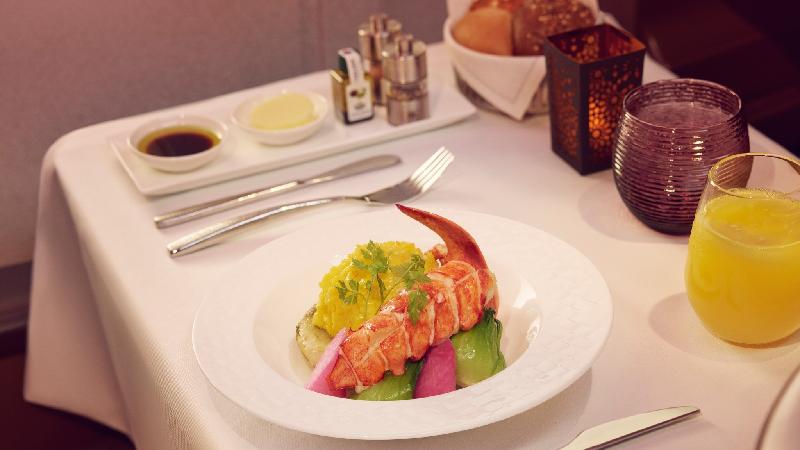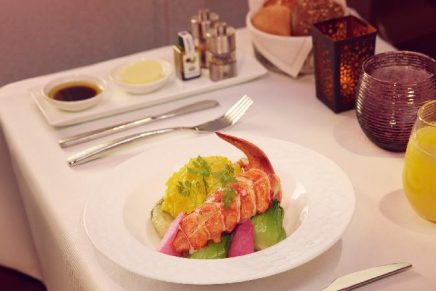How do First-Class Chefs plan, prepare and produce gourmet food for sky-high consumption.
The science behind delivering delicious meals on board: Artemis Aerospace discusses what to eat at 30,000 feet
When it comes to airline food, opinions are as diverse as the flavors in a mixed bag of jellybeans. But have you ever wondered how first-class chefs manage to plan, prepare, and produce gourmet meals that delight passengers at 30,000 feet? Artemis Aerospace takes us on a scientific and amusing journey through the world of in-flight catering to unveil the secrets behind these sky-high culinary creations.
The in-flight catering industry, valued in the millions, has always been a hot topic among frequent flyers. In fact, there’s even a website dedicated entirely to airline meals and people’s ratings of them, complete with mouth-watering photos of each dish.
But creating a gastronomic marvel for first-class passengers involves more than just premium ingredients and catering expertise. According to research by the Fraunhofer Institute for Lufthansa, high altitude alters our perception of taste. Salt becomes 20-30% less intense, sugar 15-20% less intense, and overall, nearly 70% of our sense of taste diminishes. This unusual taste experience is influenced by factors such as engine noise, low humidity levels (less than 12%), and reduced blood oxygen levels due to low cabin pressure.
To add another twist to the equation, our olfactory receptors, responsible for detecting odors, become less sensitive at higher altitudes.
Since around 85% of what we perceive as taste actually relies on our sense of smell, it’s no wonder that people often accuse airline food of being bland. But here’s a fascinating fact: spicy, bitter, sour, and umami flavors are barely affected by these changes. Garlic, for example, retains its full glory, while certain foods like lemongrass and curry actually taste even better in the air. It’s no wonder that tomato juice becomes a popular choice among flyers, as it tastes sweeter and more fruity at altitude, causing even non-tomato-juice-drinkers to crave it.
To tackle these taste challenges, airlines employ teams of executive chefs who experiment with flavors and modify dishes accordingly.
Rather than increasing salt levels, chefs rely on natural herbs and spices to enhance the bold flavors of the meals. Ingredients such as mushrooms, hard cheeses, soy, ginger, cinnamon, cardamom, and citrus fruits take center stage, while more subtle flavor enhancers prove largely ineffective.
Once the recipes are perfected, individual meals are prepared in state-of-the-art facilities near the airport. Most airlines do not have full kitchens onboard for safety reasons, so having an on-board chef is a rarity on commercial flights. Meticulous planning goes into forecasting food trends and accommodating special dietary requirements, ensuring a diverse and enjoyable dining experience for passengers. Menus are carefully rotated to avoid repetitive meals on return flights.
After preparation, the dishes are chilled in consideration of the reheating process, preventing overcooking.
Not all meals are initially heated for the same length of time; for instance, chicken may require twice as long as beef. Finally, the meals are transported to the aircraft, adhering to strict hygiene regulations throughout the entire catering process.
Onboard, the food is reheated in ovens to precisely the right temperature. Convection ovens have replaced steam ovens, as they maintain the dish’s moisture better, while microwaves are not used due to safety concerns. Once reheated, the cabin crew serves the meals on fine china, providing passengers with an elevated dining experience even at 30,000 feet. Airlines often have precise requirements for their catering, including specific fruit sizes to fit perfectly into bowls, and meticulously portioned meals to ensure consistency.
Choosing the perfect wine to accompany an airline meal is another area that has required considerable experimentation.
Just like food, wine undergoes changes in taste when subjected to the unique conditions of flight. It loses its fruitiness, becoming thinner, more tannic, and acidic. While champagne might be the go-to choice for celebrating a special occasion, its high acidity makes it less than ideal for air travel. Instead, passengers are encouraged to opt for fruity wines with low tannins, while staying hydrated with plenty of water.
So, the next time you buckle up for your flight and your tray table is adorned with lobster thermidor or shepherd’s pie, take a moment to appreciate the work that has gone into producing the meal. Raise a low-tannin glass to the caterers who masterfully conquer the challenges of providing delicious in-flight cuisine. And if the flavors seem slightly different than what you’re used to, remember that you’re embarking on a culinary adventure at 30,000 feet.





